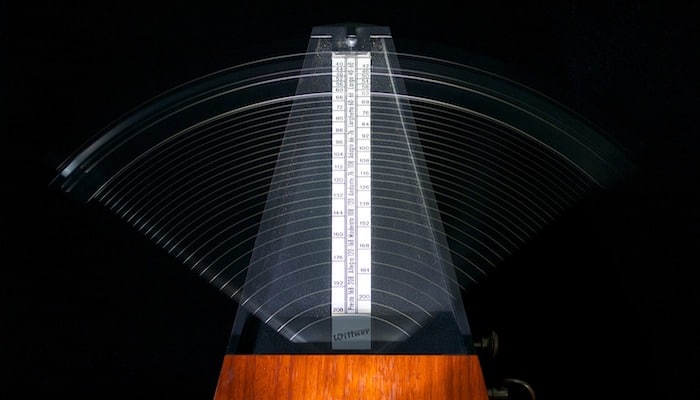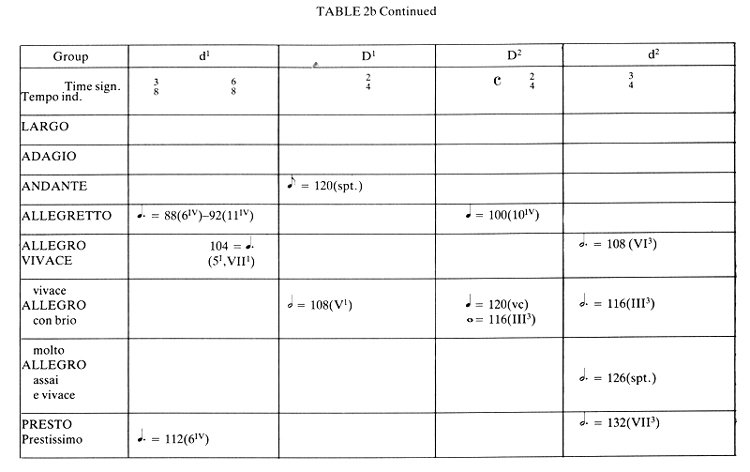A metronome is a mechanical or electronic tool used by musicians to keep a steady tempo when practicing. It can also be in software, like in the form of a smartphone app. There are several useful practice techniques for musicians to fix tempo, so the song doesn’t sound dragged or rushed. Using a metronome is one way.

Music is a natural talent, but it does not hurt to have some tools to help you sound harmonious. A metronome is a tool for reinforcing one’s instinct for rhythm. You need to set the tool to the correct rhythm, usually Beats Per Minute, and it will beep at this steady rate, and there is a solid speed to practice with.
About tempo or speed
In a piece of music, the tempo is the speed of the underlying beat. It is also called ‘the pulse’ and is measured in beats per second. It is the most vital structural element of music. When done right, different tempos can be used to convey different emotions.
Keeping one’s tempo steady needs practice. The essential thing is to feel the pulsing in your head when you play or listen to music. Some people get the rhythm by tapping their feet, clapping, or drumming on their legs.
However, keep in mind that while some pieces of music benefit from rigid tempos, others do well with the expressive change in speed. In others, the listener just wants to hear a constant pulse; any change will be felt as a disturbance.
If you have the problem of speeding up or slowing down, you need to work through the causes. Perhaps you are unconsciously rushing for the ‘easy bits’ or dragging the ‘boring bit.’ Most people can maintain a steady rhythm most of the time but drag out the ‘fiddly bits’ unconsciously. You can always note where you are going off tempo by recording yourself and paying attention to those parts later.
Using a metronome is a good practice of reinforcing one’s instinct for rhythm. Set it to a slower pulse and practice these sections you are bad at until you master the rhythm and gradually increase speed without worrying about losing precisions.
How to Use a Metronome
First, download a metronome app to your smartphone, most guitar tuning apps have a metronome built in. Even Google has a metronome built into the search results if you don’t want to download an app.

It is always better to start slow when using a metronome. Practising with slow tempos at the start will enhance your control and technique. As mentioned before, a metronome’s settings are in beats per minute. A 60BPM means the beat sounds once every second. A 120BPM is twice as fast. Tempos below 60 are quite slow, 120 is moderate, and those above 240 are extremely fast.
Set your metronome to 120BPM and practice with this tempo until you acquire the rhythm. Use this time and tempo to master the technique and timing of the specific piece of music. Ensure your finger movements fit into the available time.
Once you’ve mastered timing and technique, halve the tempo and continue practising -hearing clicks only on the 1st and third beat of each bar (assuming a time signature of 4/4).
Halve the metronome tempo again to 30 clicks per minute and keep practising, this time hearing a click on each bar’s first beat. By halving the metronome tempo, you start supplying so much of the rhythm on your own. Every time you get the rhythm right, you will hear a tick as expected, but when you get it wrong, the tick comes earlier or later than expected.
Continue halving the practising tempo and see just how thinly scattered the ticks can get while you are still in sync with them. You can achieve a click every 4 bars, but a click every 8 bars is a bit ambitious. Check out this video on metronome practising tips.
Practising tempo using a metronome sounds dull, repetitious, and tedious no matter your level, but it pays in the end when you get the rhythm. Practice with a metronome each week when learning a new musical instrument. You might find it easier using an actual drum beat rhythm so you can get into the groove. I use Loopz, which is a free mobile app and has a range of different styles.

History of the Metronome
The modern metronome is in the form of electronic or software, but it has had quite a journey through time to this point. An Andalusian polymath, Abbas Firnas (810-887), first attempted to create a metronome. But it was not until the 1800s century that Johann Maelzel acquired a patent for metronome under the title ‘A machine for the improvement of musical performance.’
Maelzel’s design was a mechanical wind-up machine. It incorporated ideas from 16th and 17th-century philosophers and scientists like Galileo Galilei’s concept of the pendulum and Etienne Loulie’s silent mechanical metronome, and Dietrich Nikolaus Winkel’s mechanical musical chronometer.
The notable composer Ludwig Beethoven was the first musician to note precise metronome markings in his works in 1817. But at its debut, the metronome wasn’t readily accepted. It was seen as a symbol of ineptitude, but later, with advancements in technology, the metronome started gaining acceptance. Even composers like Bartok and Stravinsky started writing music requiring rigorous rhythmic precision.

Nowadays, musicians, composers, and conductors use metronomes for various benefits. For musicians, it improves timing and their sense of tempo. As a training tool, the metronome is used to enhance performance speed.
Composers and conductors use it to reference tempo. They may conduct, sing, or play to it. Composers use it to derive beats per minute for indication in their compositions as metronome markings. Conductors use it to mark the preferred speed in each section of a piece of music. Recording musicians use metronomes too, with the help of audio engineers, they can sync audio tracks using click tracks (a sequence of audio cues).
Types of metronomes include mechanical, electronic, electromechanical, and software. Electronic and software metronomes are modern designs.
The electronic version features a quartz crystal for determining accuracy. The software versions include computer and smartphone standalone apps, audio multitrack packages, and even music sequencing packages. For example, iPods and mp3 players use pre-recorded click tracks. There are various metronome apps for smartphone users to avoid bringing a mechanical or electronic metronome to a practice session.
Wrap-up
The tempo is the essential structure of a piece of music. It is used to convey emotions. While some songs need rhythmic freedom, others benefit from regular tempo. If you have the problem of veering off tempo, you could do with the help of a metronome. Practice with the instrument as often as possible to get into the rhythm.